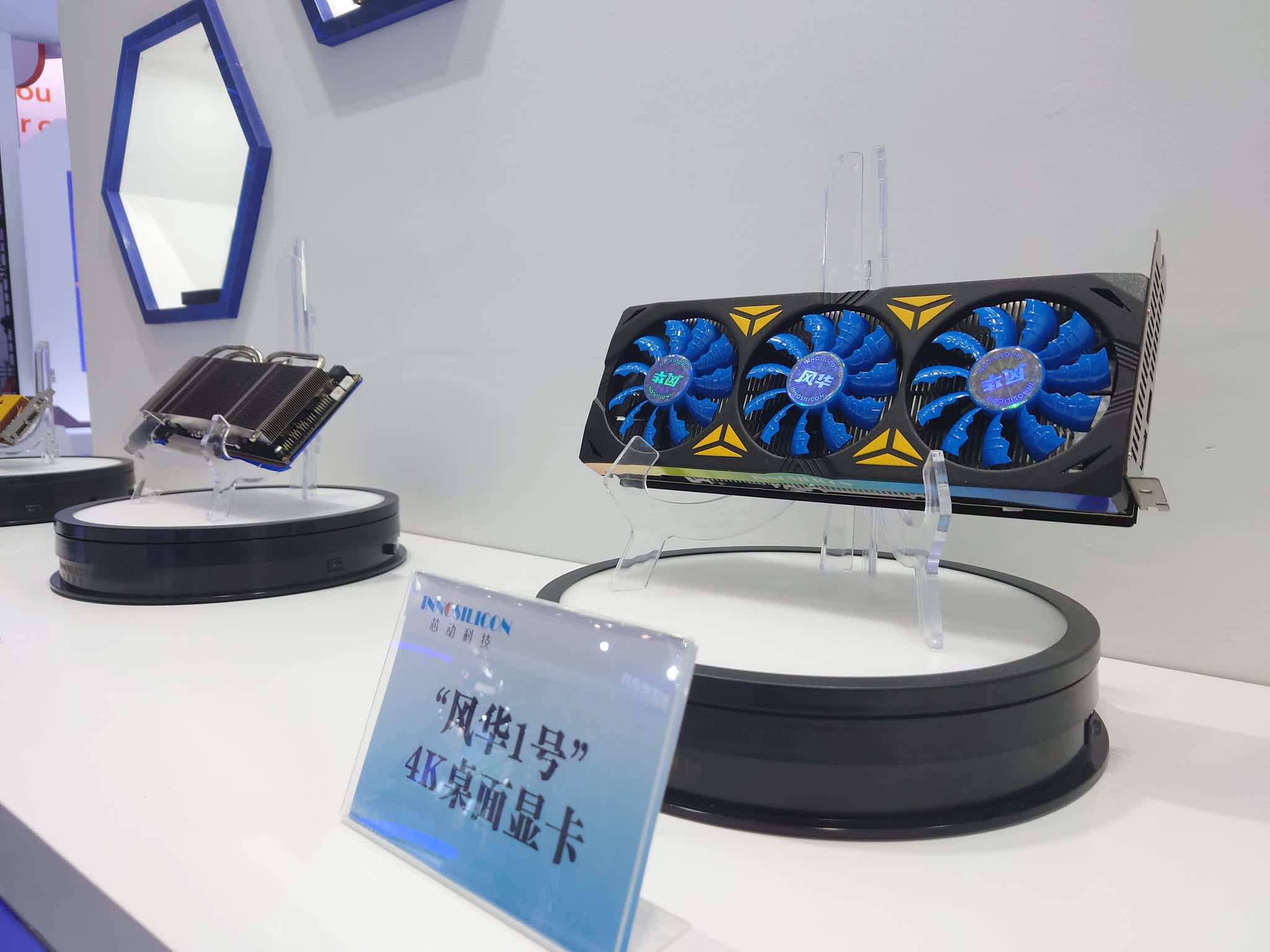In brief: China's first homegrown GPUs are impressive on paper, but the company that makes them doesn't appear too keen on selling them to consumers. Instead, it's pitching them as power-efficient compute accelerators for cloud systems, even though the spec sheet says they support DirectX and Vulkan.
In November, we learned that a Chinese company called Innosilicon had been developing a GPU that could be a similar success story as that of YMTC and its 128-layer 3D NAND memory. The new graphics card --- dubbed Fenghua 1 --- didn't receive a flashy announcement like Nvidia and AMD are known for, but what caught our eye was that it was designed to support the DirectX and Vulkan APIs used in many modern PC games.
This week, TechNode's Stewart Randall shared a short video on Twitter of what appears to be proof that China's first homegrown GPU isn't just a mirage. The video shows a mini-tower PC equipped with Innosilicon's Fenghua 1 graphics card running the GFXBench T-Rex benchmark. There's no frames-per-second counter on the screen, and we don't get to see the test result, but since this is more of a mobile-oriented benchmark, it would be unfair to draw comparisons to existing graphics cards from AMD and Nvidia.
Innosilicon graphics card. pic.twitter.com/lyMpQAo5Km
--- Stewie (@Stewrandall) December 23, 2021
At least on paper, the Fenghua 1 should match low-mid range graphics cards. There are two variants, a Type-A capable of delivering up to five teraflops of FP32 performance and a Type-B that can double that thanks to a dual-chip architecture. They're both based on PowerVR IP from Imagination Technologies, which should make them relatively power efficient despite being manufactured using a 12 nm process node. They also support DirectX 11, DirectX 12, and Vulkan 1.2.
For reference, Nvidia's GTX 1660 SUPER can deliver a bit over five teraflops of FP32 performance, and the non-Ti RTX 2080 provides just a hair over 10 TFLOPS. However, the specifications provided by Innosilicon don't seem to add up. On the one hand, the Fenghua 1 cards use 19 Gbps GDDR6 and GDDR6X memory for up to 304 GB per second of bandwidth, and the company says the pixel fill rate of the Type-A configuration is a respectable 160 GPixels per second. On the other hand, the typical power consumption rating is a diminutive 50 watts, and there's no way to tell how these specs translate into gaming scenarios.
Innosilicon says it will sell different variants with 4, 8, and 16 gigabytes of VRAM, and the marketing materials indicate these are primarily aimed at the enterprise market. Not much is known about retail availability, but we may learn more about these mysterious graphics cards next year.
